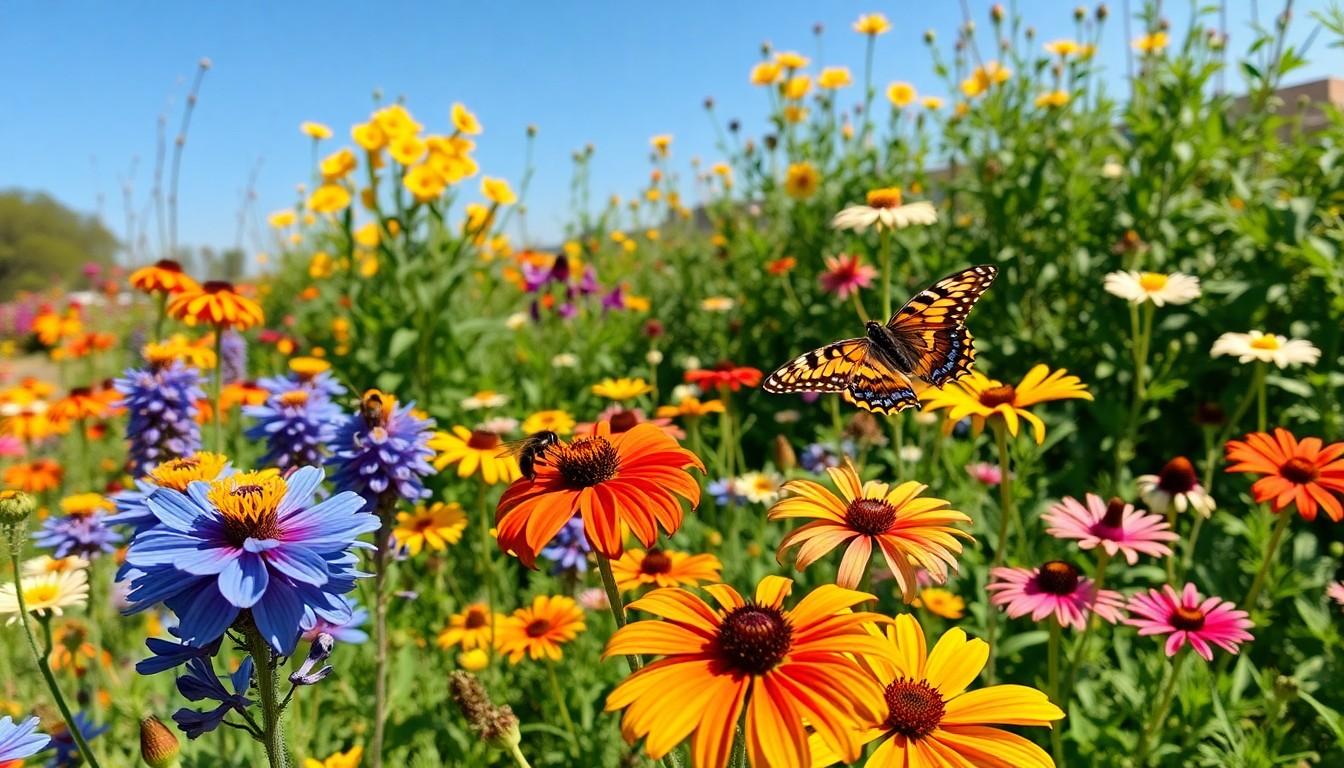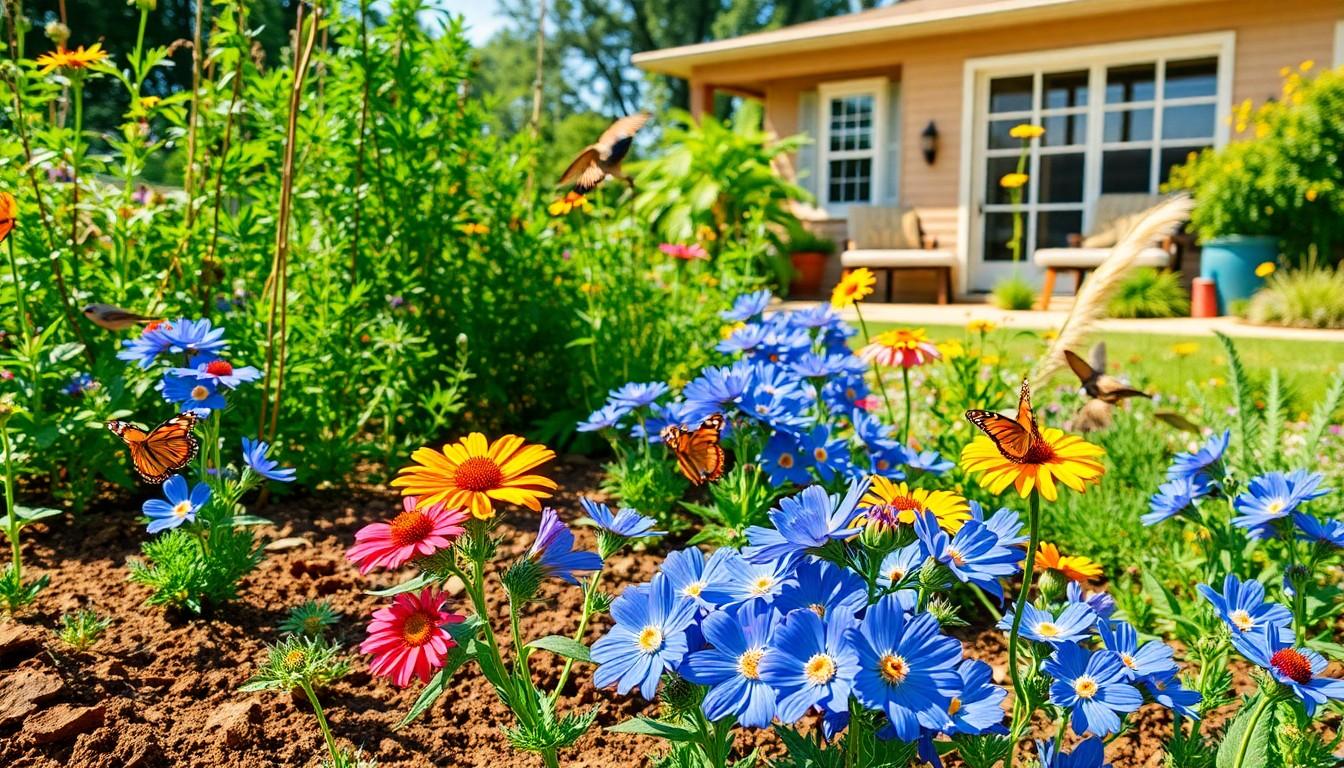San Antonio’s landscape is a vibrant tapestry of colors and textures, but it’s the native plants that truly steal the show. These local heroes are not just pretty faces; they’re like the cool kids at school—adapted to the Texas climate and ready to thrive with minimal fuss. By choosing native plants, gardeners can create a stunning outdoor space while supporting local wildlife and conserving water.
Imagine a garden that requires less maintenance than your neighbor’s overly ambitious lawn. Native plants can make that dream a reality. They’re resilient, drought-tolerant, and they attract butterflies and birds like a magnet. In a city known for its rich cultural heritage, why not celebrate the local flora? Embracing these native beauties is a step towards a greener, more sustainable San Antonio. Let’s dive into the world of native plants and discover how they can transform any garden into a vibrant oasis.
Overview Of Native Plants In San Antonio
Native plants thrive in San Antonio, fostering an ecosystem that supports local wildlife and enhances gardens’ aesthetic appeal. They adapt well to the region’s climate, showcasing impressive drought resistance and low maintenance needs. Numerous flowering plants, shrubs, and grasses, such as Blackfoot Daisy, Texas Bluebonnet, and Desert Willow, flourish in local gardens, creating vibrant landscapes.
Collectively, these native species contribute significantly to the local environment. Pollinators like butterflies and bees benefit from the blooms, while birds find food and shelter among the foliage. Native plants play a vital role in soil conservation, preventing erosion and improving soil health through their rooting systems.
Many gardeners appreciate the resilience of these plants. For instance, the Mexican Feather Grass and Lantana offer a stunning array of colors while attracting beneficial insects. The combination of beauty and functionality makes them ideal for sustainable landscaping.
Community initiatives promote the use of native plants, raising awareness of their importance. Local organizations provide resources, guiding residents on selecting and maintaining these plants. By participating in these efforts, individuals contribute to a more sustainable San Antonio.
Native plants form the foundation of a thriving ecosystem in San Antonio. Embracing these species not only enhances the beauty of outdoor spaces but also fosters biodiversity and resilience in the local environment.
Benefits Of Using Native Plants

Native plants offer numerous advantages that enhance the sustainability and beauty of gardens in San Antonio. Selecting these plants supports local ecology, reducing resource inputs over time.
Environmental Benefits
Using native plants fosters biodiversity by attracting a variety of pollinators such as bees and butterflies. These plants require less water once established, making them drought-resistant and lowering irrigation needs. They improve soil health by preventing erosion and promoting nutrient cycling. Supporting local wildlife, native flora provides food and habitat, creating a balanced ecosystem. Choosing native species can also reduce reliance on chemical fertilizers and pesticides, leading to healthier soil and air quality. Efforts to restore native landscapes contribute to climate resilience, helping mitigate the effects of urbanization.
Aesthetic Appeal
Native plants showcase vibrant colors and unique textures, enhancing the landscape’s beauty. Gardens filled with species like the Texas Bluebonnet bring seasonal blooms that attract visitors. Their natural adaptation to the local environment promotes a sense of harmony with the surroundings. Plants like the Blackfoot Daisy present striking flowers that catch the eye and evoke interest. By integrating native species into garden designs, homeowners create visually appealing spaces that require less maintenance. A well-planned native garden reflects the natural heritage of San Antonio, encouraging pride in the local ecosystem’s beauty.
Popular Native Plants In San Antonio
San Antonio boasts a variety of native plants perfect for gardens and landscapes. These selections adapt well to local conditions while supporting the ecosystem.
Flowers
Wildflowers like Blackfoot Daisy and Texas Bluebonnet thrive in San Antonio. Blackfoot Daisy features vibrant yellow blooms that attract butterflies. Texas Bluebonnet, the state flower, showcases stunning blue colors during the spring months. Other favorites include the Coneflower and Mexican Hat, both of which flourish in sunny areas and draw pollinators. Gardeners appreciate these flowers for their ability to require minimal water once established, creating beautiful displays with low maintenance.
Shrubs
Shrubs such as Agarita and Texas Sage stand out in local landscapes. Agarita produces fragrant yellow flowers and offers berries that birds enjoy. Texas Sage, known for its silver-green foliage, creates a striking contrast with its purple blooms. These shrubs not only serve as resilient barriers for gardens but also attract beneficial insects. The low water needs of these plants make them ideal for drought-tolerant gardens, contributing to sustainability while enhancing the landscape’s overall aesthetics.
Trees
Trees like Desert Willow and Live Oak provide shade and beauty. Desert Willow boasts stunning pink and purple flowers during the summer, thriving in extreme heat. Live Oak, a significant part of Texas heritage, provides robust canopies that support local wildlife. Pecan trees add culinary value by producing edible nuts along with their attractive appearance. These trees adapt effortlessly to San Antonio’s climate, needing less water and care as they mature, all while enriching local ecosystems.
How To Incorporate Native Plants In Your Garden
Incorporating native plants into a garden brings numerous benefits while enhancing the aesthetics of outdoor spaces.
Planting Tips
Select the right time for planting. Early spring or fall works best in San Antonio. Prepare the soil by loosening it and adding organic matter. Instead of overcrowding, leave enough space between plants to promote air circulation. Choose a diverse range of species to ensure a vibrant and dynamic garden. Water the plants deeply after planting, allowing the roots to establish well. Opt for plants that thrive in specific sunlight conditions. For instance, full-sun natives like Texas Bluebonnet flourish in bright areas. Protect young plants from pests by applying natural deterrents, if necessary.
Maintenance Guidelines
Monitor soil moisture levels regularly. Once established, native plants require less watering, conserving resources. Mulch retains soil moisture and reduces weed growth. Instead of chemical fertilizers, use organic alternatives to support healthy growth. Prune plants as needed to encourage bushiness and flowering. Observe plants for signs of disease or pests, addressing issues promptly to prevent spread. Encourage local wildlife by providing food sources through berries and nectar. Schedule seasonal checks to assess the overall health of the garden, making adjustments for improving design and diversity.
Resources For Native Plant Enthusiasts
Numerous organizations and websites support native plant lovers in San Antonio. The Native Plant Society of Texas offers valuable information on local flora, gardening techniques, and volunteer opportunities. Their resources include workshops and plant sales, making it easier for enthusiasts to connect with the community.
Local nurseries like Native American Seed and Hill Country Seed offer a variety of native plants for sale. Each nursery provides guidance on plant selection, ensuring gardeners choose species suited for their specific needs. Consulting with these experts helps create beautiful, resilient gardens.
Online forums and social media groups serve as excellent platforms for sharing knowledge and experiences. Platforms like Facebook and Reddit host groups dedicated to native plants and gardening in San Antonio. Engaging with fellow enthusiasts fosters a sense of community while offering tips and advice.
Educational resources like Texas A&M AgriLife Extension deliver research-based information on native plants. Their website features publications on gardening, landscaping, and environmental stewardship. Utilizing these resources promotes the successful integration of native species into gardens.
Participation in local workshops and events scheduled by conservation groups enhances understanding of native plants. Activating personal knowledge through hands-on learning enriches the gardening experience. Many organizations host events throughout the year, focusing on topics such as plant identification and sustainable gardening practices.
Lastly, local botanical gardens, like the San Antonio Botanical Garden, often host educational programs. Exploring these gardens provides inspiration while showcasing the beauty of native plants in different settings. Enthusiasts visiting these spaces gain insights into planting techniques and landscape design using local flora.
Conclusion
Embracing native plants in San Antonio not only enhances the beauty of gardens but also fosters a sustainable ecosystem. These resilient species thrive in the local climate while providing essential support for wildlife. By choosing native flora, gardeners contribute to water conservation and reduced maintenance efforts.
The vibrant colors and unique textures of native plants create visually appealing landscapes that reflect the region’s natural heritage. Engaging with local resources and community initiatives further enriches the gardening experience. Ultimately, integrating native plants into outdoor spaces leads to a healthier environment and a deeper connection to San Antonio’s rich biodiversity.

